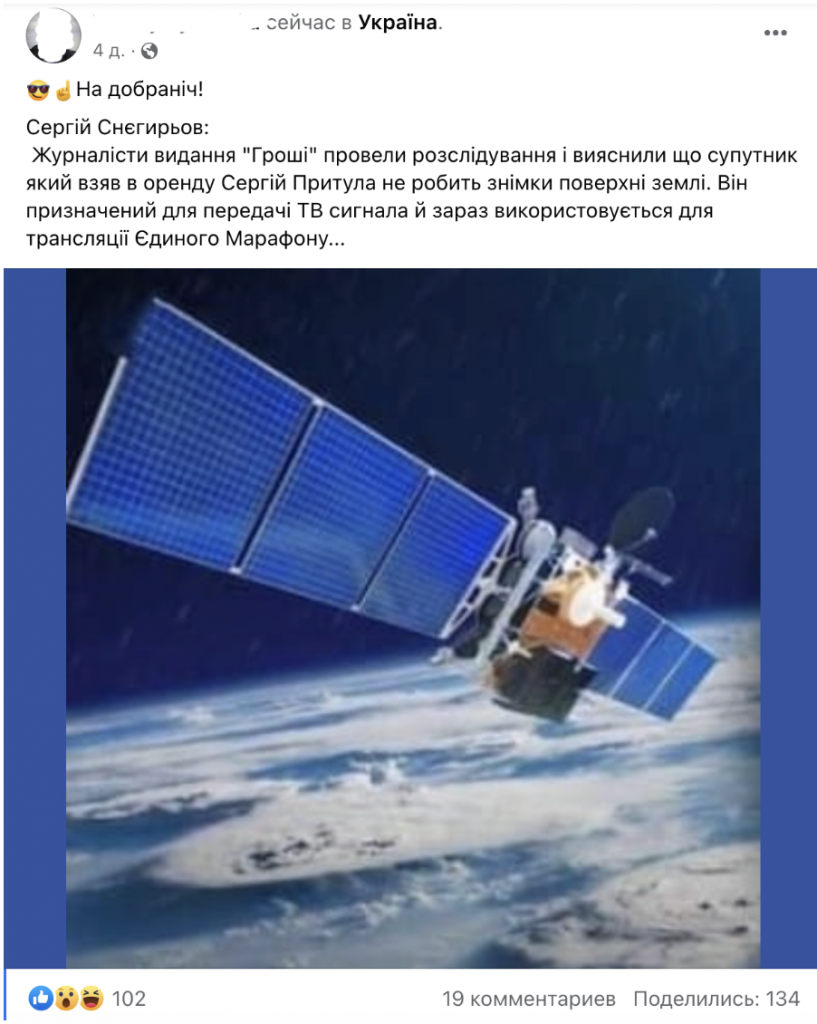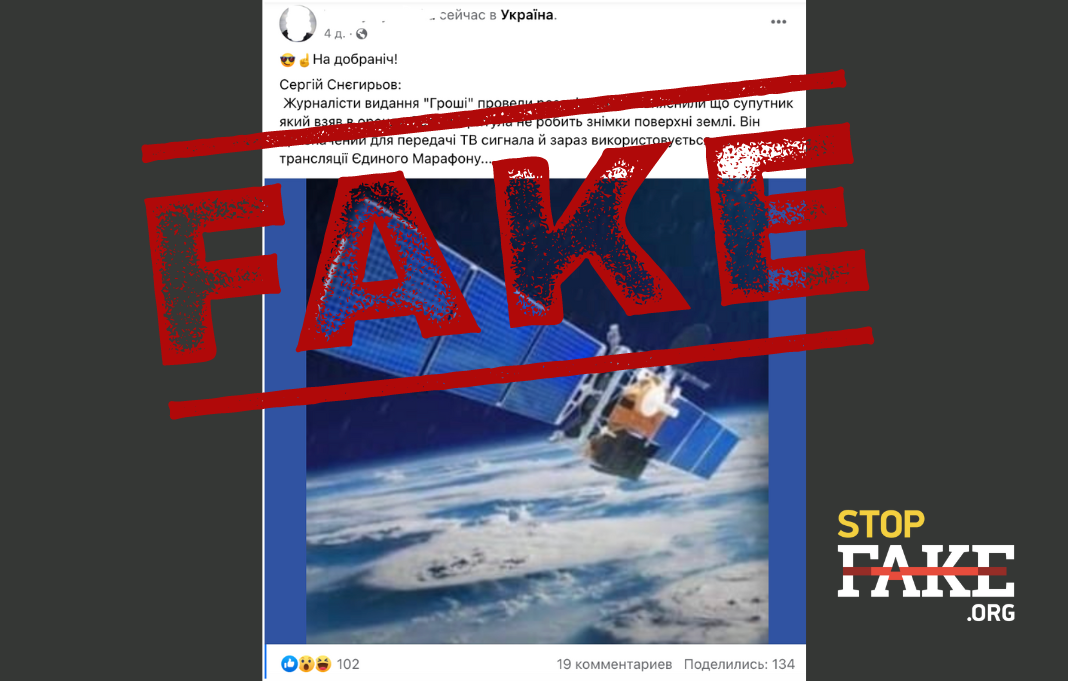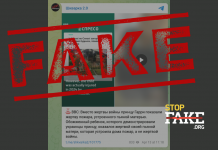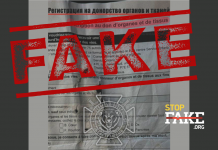Ukrainian journalists have not published any investigations regarding the ICEYE satellite purchased by the Serhiy Prytula Charity Foundation through donations from Ukrainians. Satellites for television signal transmission and the ICEYE operate in different orbits and serve different purposes.
A post claiming that the ICEYE satellite, purchased with the support of Ukrainians through the Serhiy Prytula Charity Foundation, is not being used for the benefit of the Ukrainian Armed Forces, is spreading on social media platforms like Facebook and Twitter. The publications assert that Ukrainian journalists have conducted an investigation and found that the satellite is not being used for reconnaissance but for “broadcasting TV signals and transmitting the United News [telethon] for money paid to Prytula from the state budget.”

Disinformation regarding the ICEYE satellite, purchased in August 2022 with the support of Ukrainians through the Serhiy Prytula Charity Foundation, first appeared on social media in November 2022. In May 2023, the fake news started to spread actively on the internet with the support of Russian bots. The information about the “broadcast” of the Ukrainian news marathon by the ICEYE observation satellite is an anti-scientific fake. Also, since August 2022, there have been no journalistic investigations about the satellite.
ICEYE is a Finnish aerospace company that operates a constellation of 21 satellites in orbit. On August 18, the organization confirmed the signing of a contract with the Prytula Foundation. As part of the agreement, ICEYE provided Ukraine with all the capabilities of one of its satellites, which is already in orbit. This satellite works exclusively for the needs of the Ukrainian army. Additionally, ICEYE granted access to data from its satellite constellation, enabling the Armed Forces of Ukraine to obtain radar satellite images of critical locations.
In wartime, the details of the satellite’s operation are not disclosed, as the information could be used by the Russian occupiers. However, according to the Ministry of Defense of Ukraine, in the first two days of the satellite’s operation alone, more than 60 pieces of military equipment were detected that Russia unsuccessfully tried to disguise in Ukraine.
“In fact, during these two days, the enemy lost armored vehicles worth more than the entire satellite project,” said Ukrainian Minister of Defense Oleksii Reznikov in September 2022.
In May 2023, the Main Directorate of Intelligence once again confirmed the fact of the ICEYE satellite’s work for the defense of the country. They emphasized that in six months of using satellite intelligence, Ukraine “turned billions of dollars worth of Russian military equipment into scrap metal, not to mention the accumulation of enemy manpower and military logistics facilities.”
It is worth emphasizing the unscientific nature of the statements about the “use” of the ICEYE satellite to “broadcast” the Ukrainian news telethon. The ICEYE satellite and television and radio signals satellites are fundamentally different spacecraft operating in different orbits and, accordingly, at different altitudes. The geostationary orbit is most often used to deploy television satellites. The satellite located in this orbit orbits the Earth at a speed equal to the speed of its rotation around its axis. In other words, the satellite “hovers” over a certain point on the Earth, which allows it to transmit a high-quality TV signal to the end user.
Unlike television satellites, ICEYE satellites are located in a solar-synchronous (heliosynchronous) orbit with a rotation frequency of about 96 minutes. That is, the satellites make 15 rotations per day. Each ICEYE orbital plane is positioned around the Earth in such a way that the total constellation of ICEYE satellites can observe a specific location on Earth at different times of the day.
The ICEYE satellites are small and weigh only 92 kilograms, which makes the constellation maneuverable, and the electronic control of the satellites allows for quick and accurate targeting of radar pulses to the desired point on Earth. The satellites also operate in the X-band (the frequency range used in radar) with a data rate of 140 Mbps. This means that satellite target detection is performed in near real-time. ICEYE is capable of providing high-quality photos in any weather, cloud cover and at night. Image sizes range from strategic images of areas up to 10,000 km² to detailed images of objects with a resolution of up to 25 cm.





